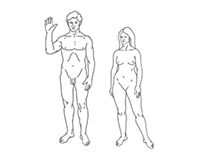Matcha [mah-chuh] is finely ground powder of specially grown and processed green tea leaves. It is special in two aspects of farming and processing: the green tea plants for matcha are shade-grown for about three weeks before harvest and the stems and veins are removed in processing. During shaded growth, the plant Camellia sinensis produces more theanine and caffeine.
The traditional Japanese tea ceremony centers on the preparation, serving, and drinking of matcha as hot tea and embodies a meditative spiritual style. In modern times, matcha has also come to be used to flavor and dye foods such as mochi and soba noodles, green tea ice cream, matcha lattes, and a variety of Japanese wagashi confectionery.
Blends of matcha are given poetic names known as chamei (‘tea names’) either by the producing plantation, shop, or creator of the blend, or by the grand master of a particular tea tradition. When a blend is named by the grand master of a tea ceremony lineage, it becomes known as the master’s konomi.
In China during the Tang Dynasty (618–907), tea leaves were steamed and formed into tea bricks for storage and trade. The tea was prepared by roasting and pulverizing the tea, and decocting (extracting the main components via boiling) the resulting tea powder in hot water, then adding salt. During the Song Dynasty (960–1279), the method of making powdered tea from steam-prepared dried tea leaves, and preparing the beverage by whipping the tea powder and hot water together in a bowl became popular.
Preparation and consumption of powdered tea was formed into a ritual by Chan or Zen Buddhists. The earliest extant Chan monastic code, entitled ‘Chanyuan Qinggui’ (‘Rules of Purity for the Chan Monastery,’ 1103), describes in detail the etiquette for tea ceremonies. Zen Buddhism and the Chinese methods of preparing powdered tea were brought to Japan in 1191 by the monk Eisai. In Japan it became an important item at Zen monasteries and from the fourteenth through to the sixteenth centuries was highly appreciated by members of the upper echelons of society. Although powdered tea has not been popular in China for some time, there is now a global resurgence in the consumption of Matcha tea, including in China.
The preparation of matcha starts several weeks before harvest and may last up to 20 days, when the tea bushes are covered to prevent direct sunlight. This slows down growth, stimulates an increase in chlorophyll levels, turns the leaves a darker shade of green, and causes the production of amino acids, in particular theanine. Only the finest tea buds are hand-picked. After harvesting, if the leaves are rolled up before drying as in the production of sencha (another variety of green tea), the result will be gyokuro (jade dew) tea. If the leaves are laid out flat to dry, however, they will crumble somewhat and become known as tencha. Then, tencha may be de-veined, de-stemmed, and stone-ground to the fine, bright green, talc-like powder known as matcha.
Grinding the leaves is a slow process, because the mill stones must not get too warm, lest the aroma of the leaves is altered. It may take up to one hour to grind 30 grams of matcha. The flavor of matcha is dominated by its amino acids. The highest grades of matcha have more intense sweetness and deeper flavor than the standard or coarser grades of tea harvested later in the year.
Prior to use, the matcha often is forced through a sieve in order to break up clumps. There are special sieves available for this purpose, which usually are stainless steel and combine a fine wire mesh sieve and a temporary storage container. A special wooden spatula is used to force the tea through the sieve, or a small, smooth stone may be placed on top of the sieve and the device shaken gently. If the sieved matcha is to be served at a Japanese tea ceremony, then it will be placed into a small tea caddy known as a chaki. Otherwise, it can be scooped directly from the sieve into a tea bowl.
About two to four grams of matcha is placed into the bowl, traditionally using a bamboo scoop called a chashaku, and then about 60–80 ml of hot (but not boiling) water is added. The mixture is then whisked to a uniform consistency, using a bamboo whisk known as a chasen. There must be no lumps left in the liquid, and no ground tea should remain on the sides of the bowl. Because matcha may be bitter, it is traditionally served with a small wagashi (a traditional Japanese confection), but without added milk or sugar.
Usucha, or thin tea, is prepared with approximately 1.75 grams (amounting to 1.5 heaping chashaku scoop, or about half a teaspoon) of matcha and approximately 75 ml of hot water per serving, which can be whisked to produce froth or not, according to the drinker’s preference (or to the traditions of the particular school of tea). Usucha creates a lighter and slightly more bitter tea. Koicha, or thick tea, requires significantly more matcha (usually about doubling the powder and halving the water): approximately 3.75 grams (amounting to 3 heaping chashaku scoops, or about one teaspoon) of matcha and approximately 40 ml of hot water per serving, or as many as 6 teaspoons to 3⁄4 cup of water. Because the resulting mixture is significantly thicker (with a similar consistency to liquid honey), blending it requires a slower, stirring motion that does not produce foam. Koicha is normally made with more expensive matcha from older tea trees (exceeding thirty years) and, thus, produces a milder and sweeter tea than usucha; it is served almost exclusively as part of Japanese tea ceremonies.
The Daily Omnivore
Everything is Interesting



Leave a comment